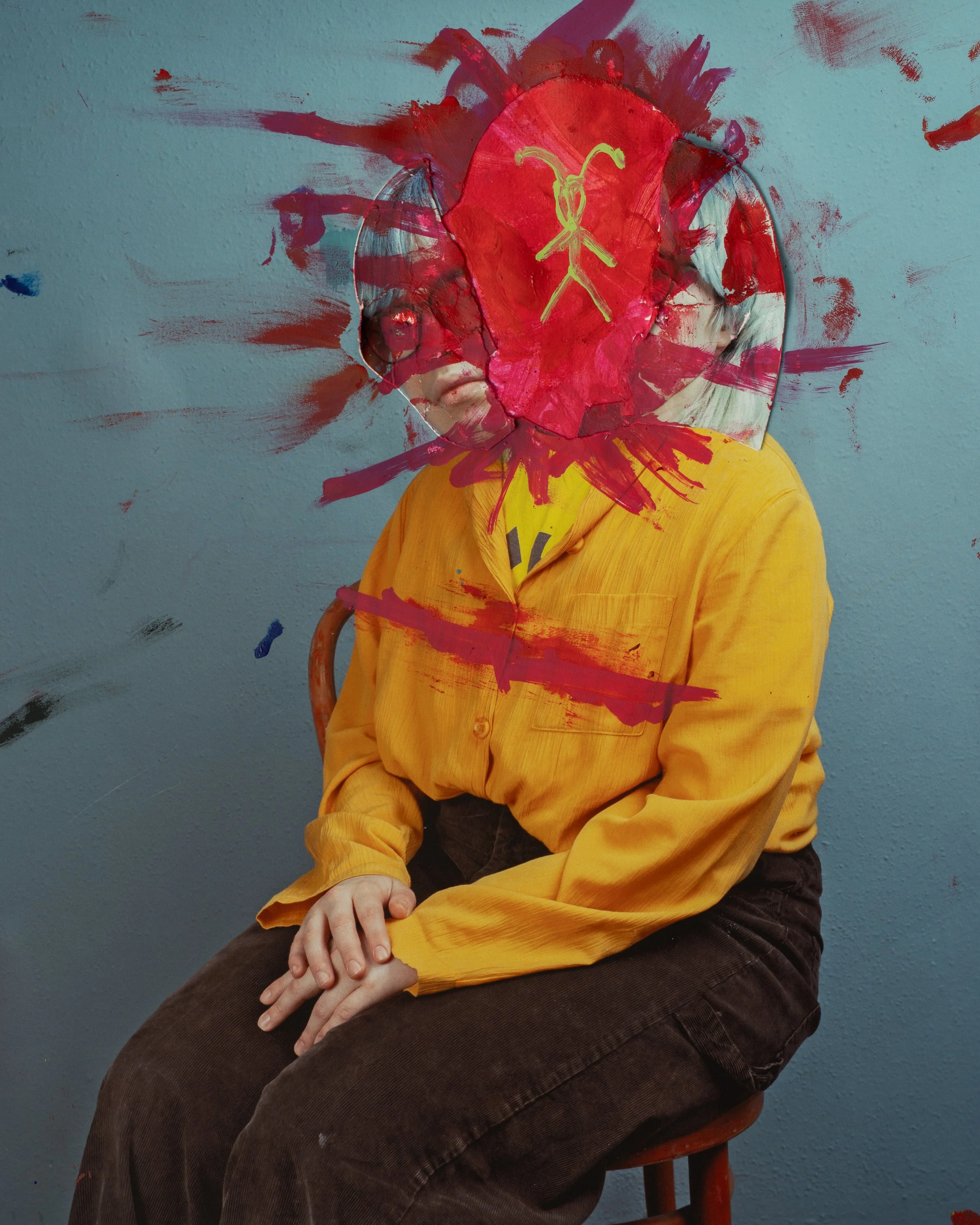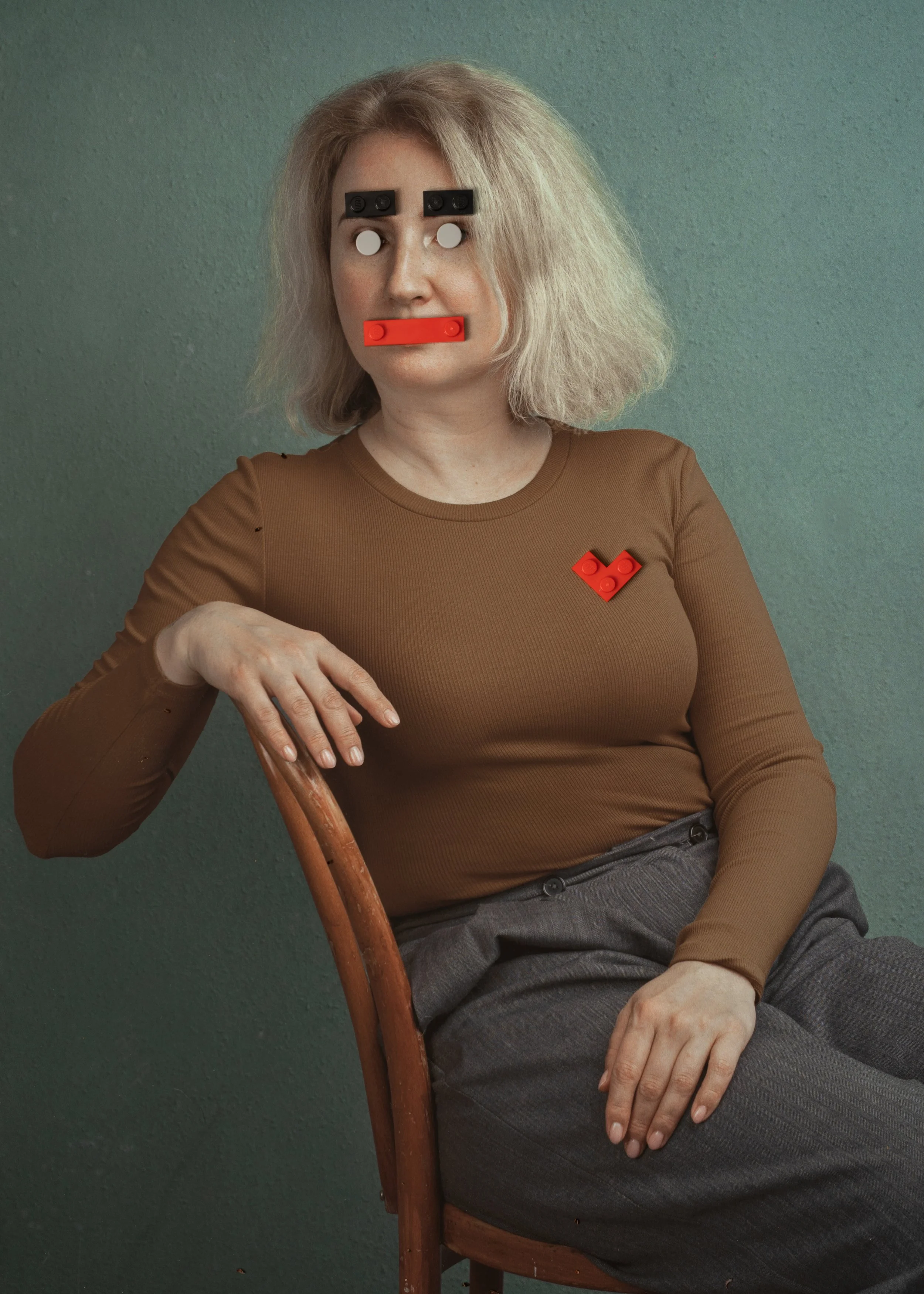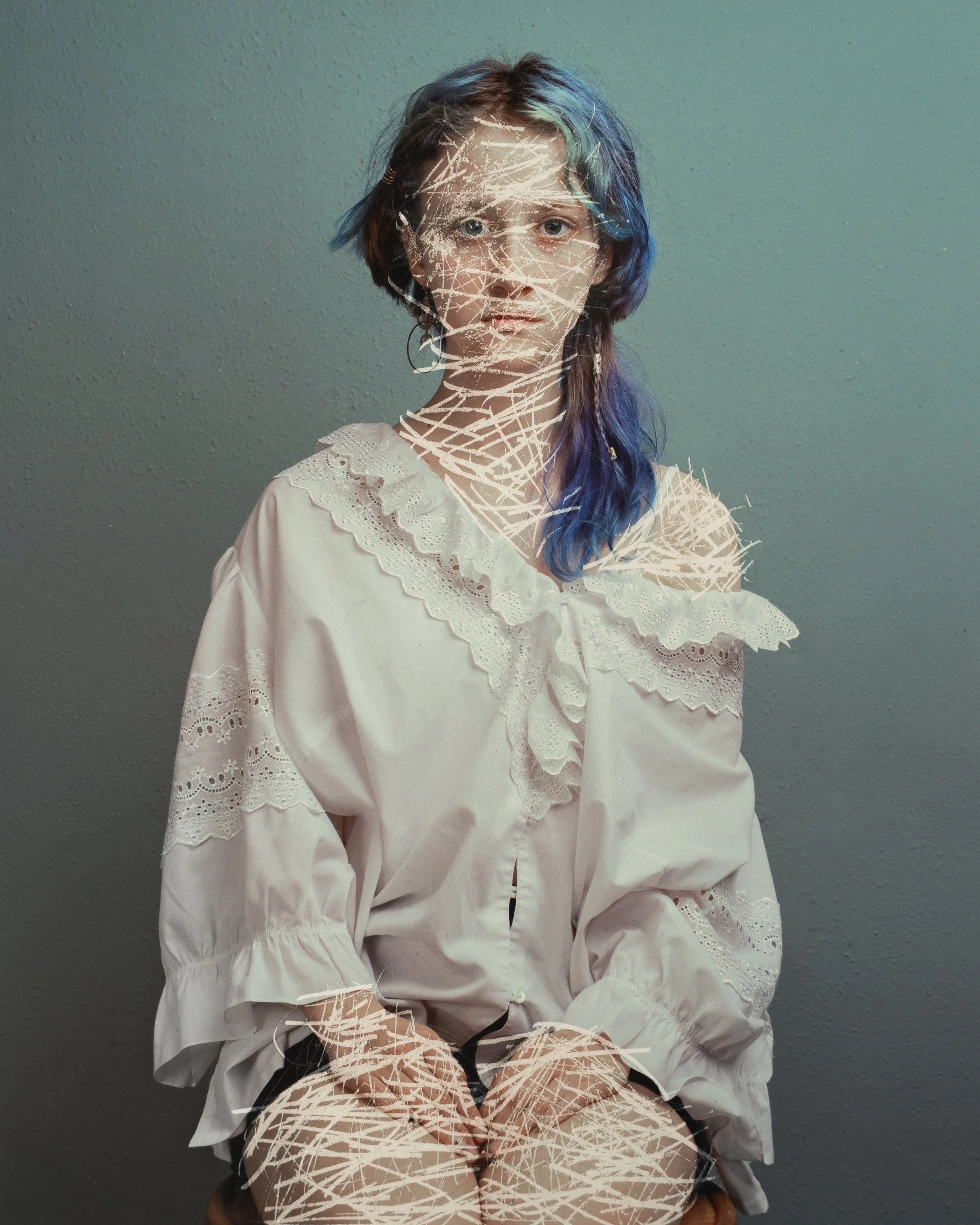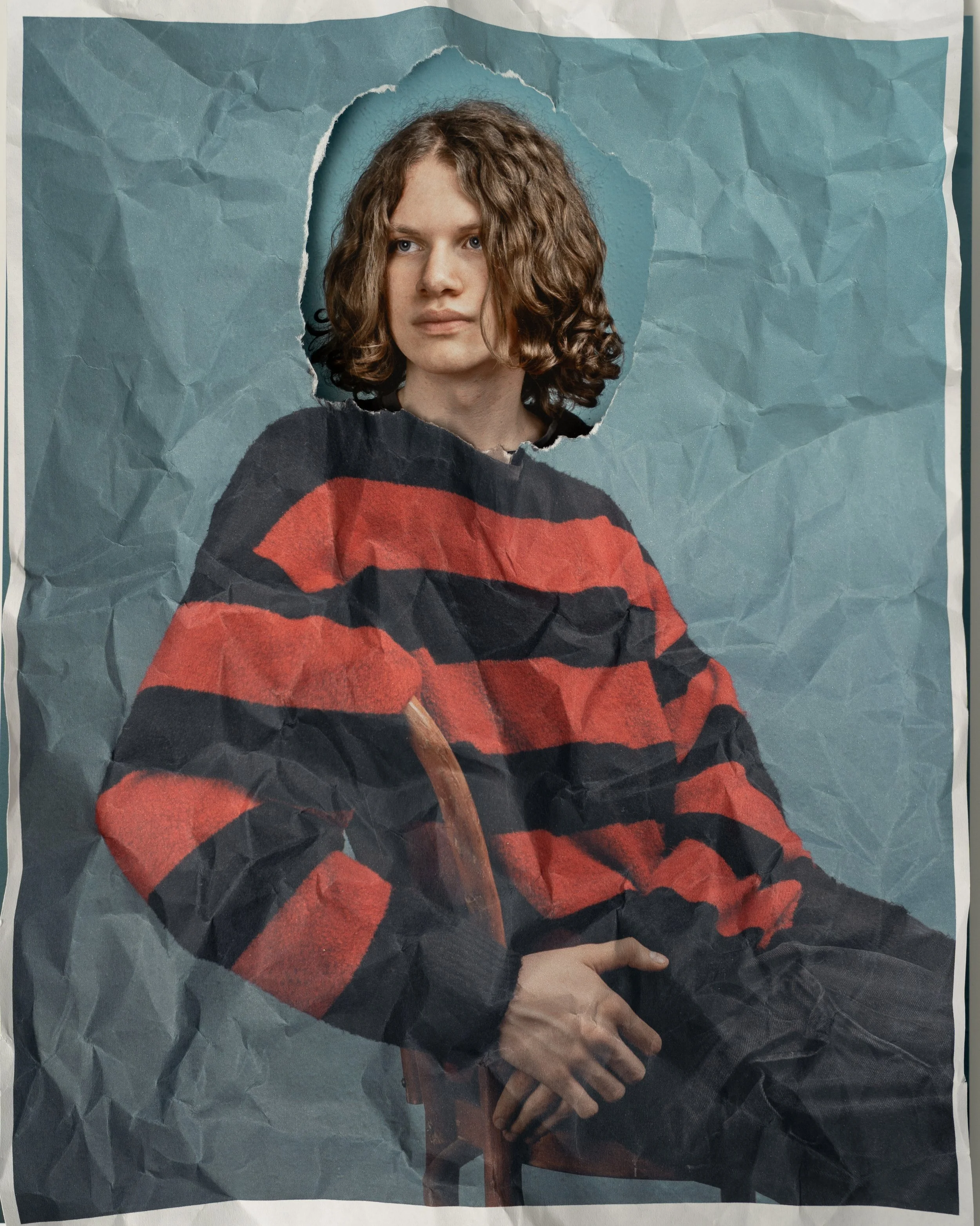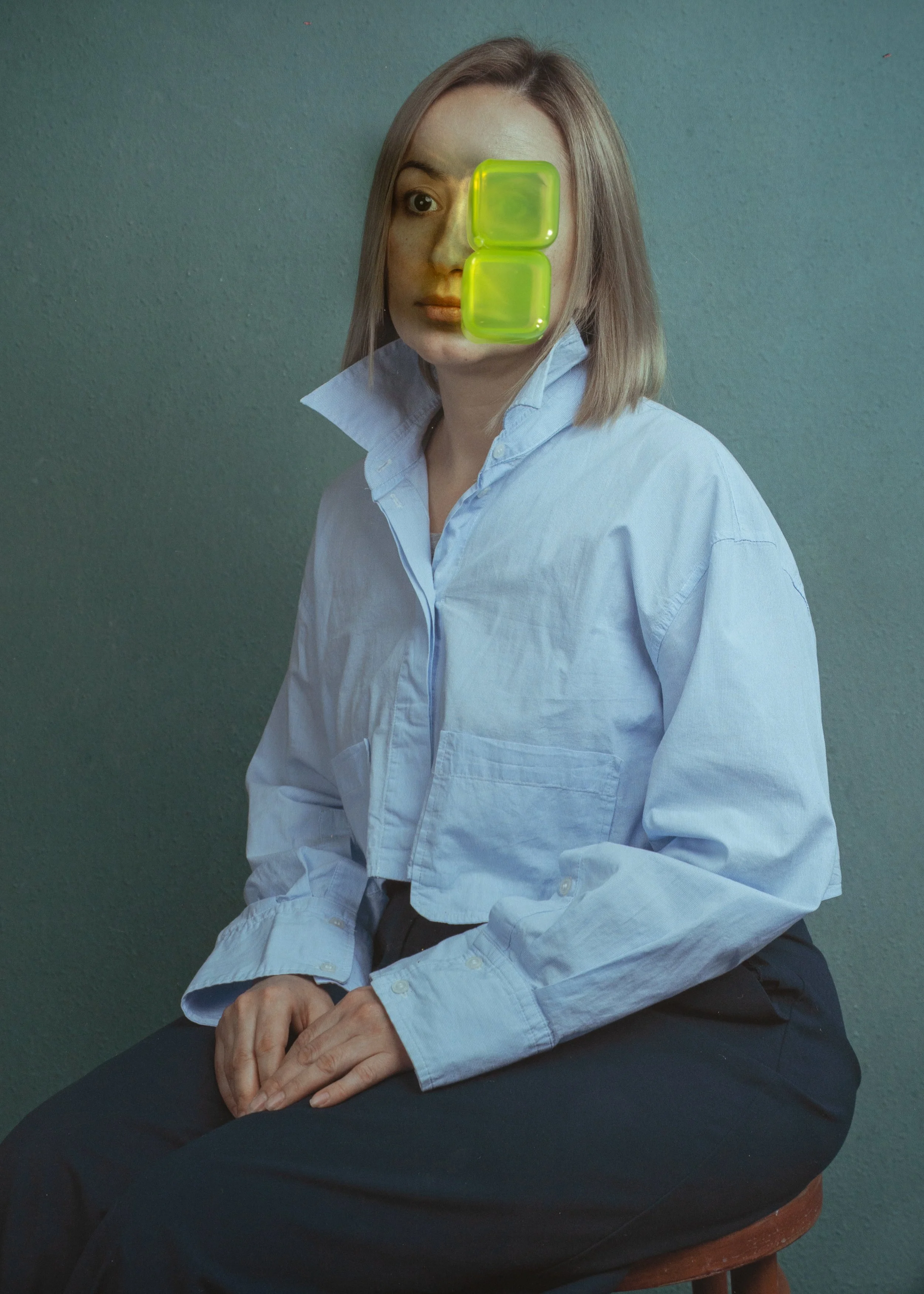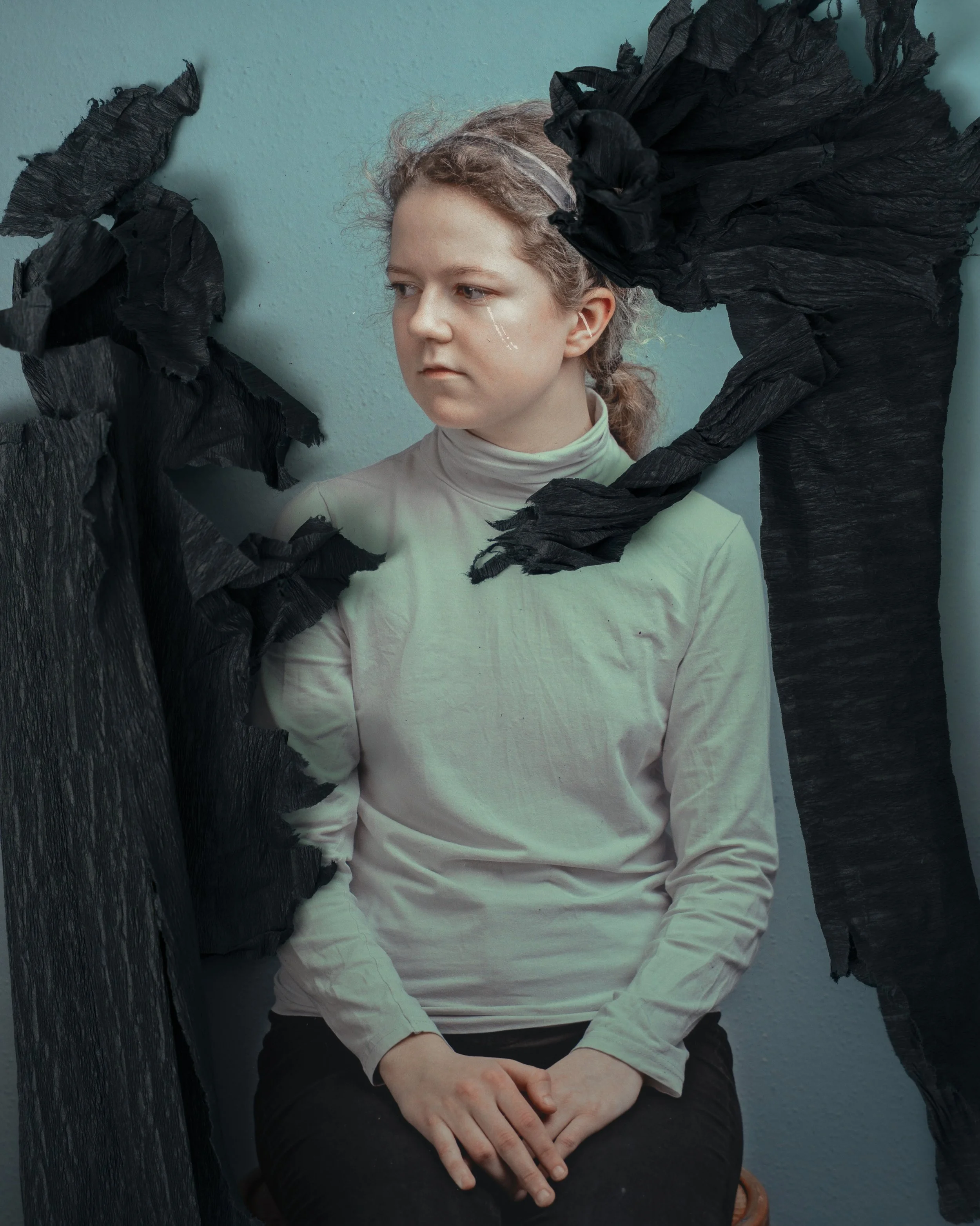This project emerged at the intersection of portrait photography, visual experimentation, and personal introspection. It involved 13 participants from the Russian-speaking immigrant community living in Slovenia. The participants came from different age groups and backgrounds. Some had artistic education, but this specific type of practice — working with one’s own image through mixed media — was new to all of them.
The project was divided into two stages. In the first stage, I photographed each participant in a studio and created a series of classic portraits, which were then printed. In the second stage, we met as a group, and each person received their printed portrait along with complete freedom to do whatever they wished with it: draw, cut, glue, deform, or modify. The interventions ranged from subtle to radical. The portrait served not as a finished product, but as a starting point — raw material for a personal expression.
The process went beyond simple visual transformation — it became deeply personal. Participants engaged with their own image both from the outside and from within. Some carefully worked with facial features; others completely reconstructed the image. A dialogue emerged between how I, as the portrait photographer, see the person, how they see themselves, and what appears in the space between those perspectives. For some, the process was playful and exploratory; for others, it became a more complex and profound inquiry into the self.
An important part of the project was a series of short interviews I conducted with most participants after their work was complete. These conversations offered insights into the internal processes — doubts, discoveries, resistance, and moments of recognition.
The migrant context of the project was not addressed explicitly, yet it resonated throughout — as background, as an unspoken layer, as a kind of subconscious tension. Identity stretched between cultures, the loss of stable reference points, adaptation to a new environment — all of this found expression through the work with one's own face. Not as a stated theme, but as an act: a right to change, to reconstruct, to articulate what would otherwise remain invisible.
In this way, the project became a space for personal encounter. Each portrait carries the trace of a touch, an act of trust, an attempt to reclaim one’s image. It is an autonomous work in which the participant becomes a co-author. The image ceases to be static — it becomes a process, a way of thinking, a form of interaction.




